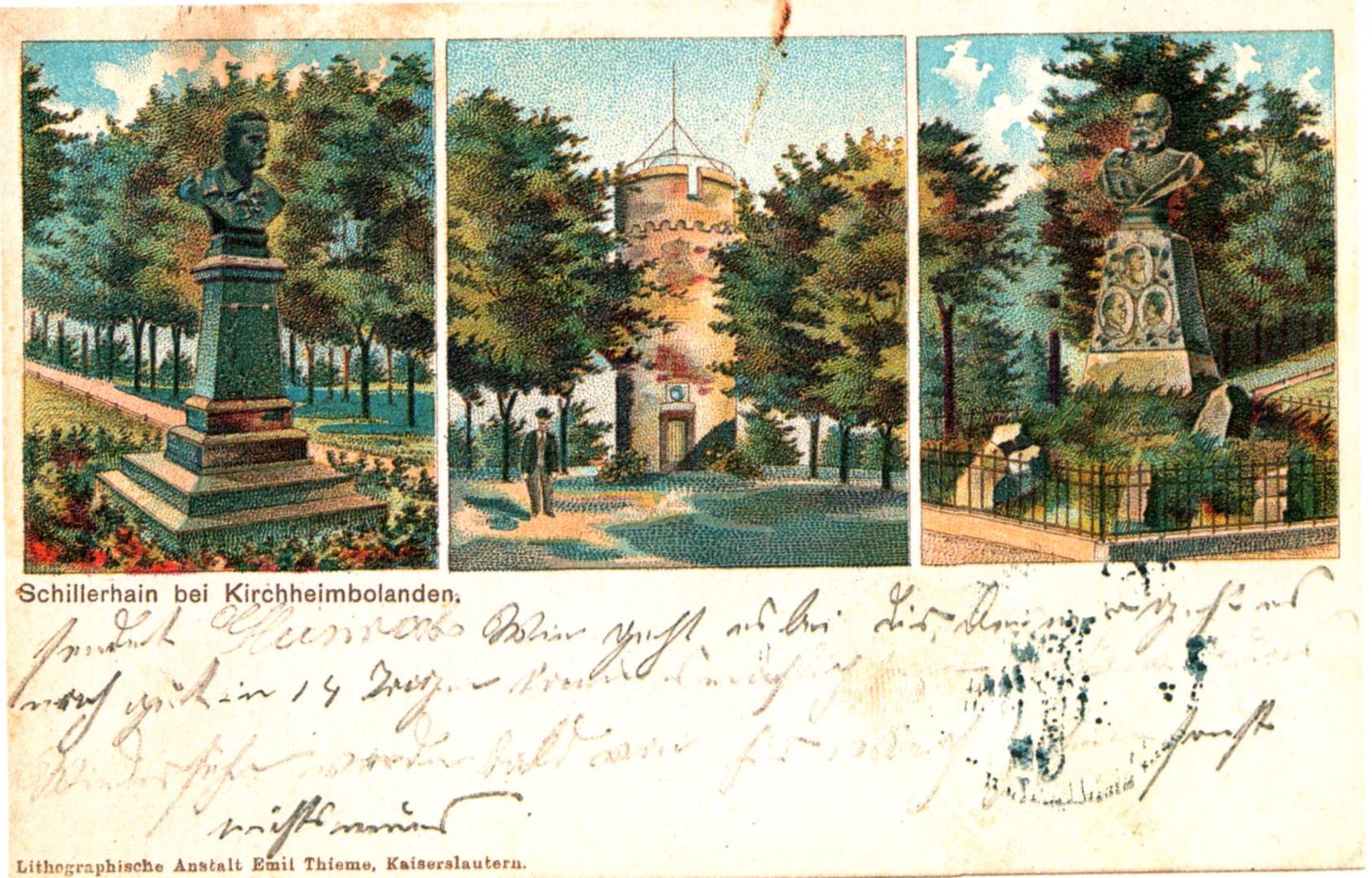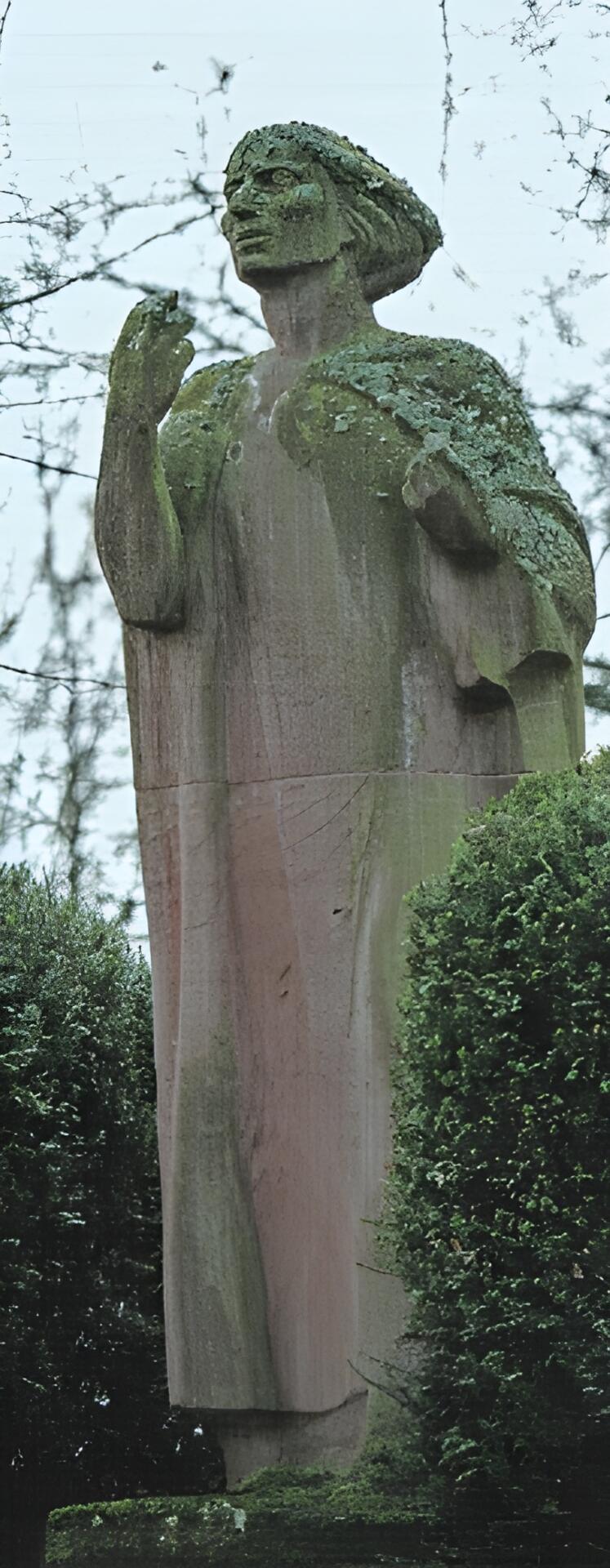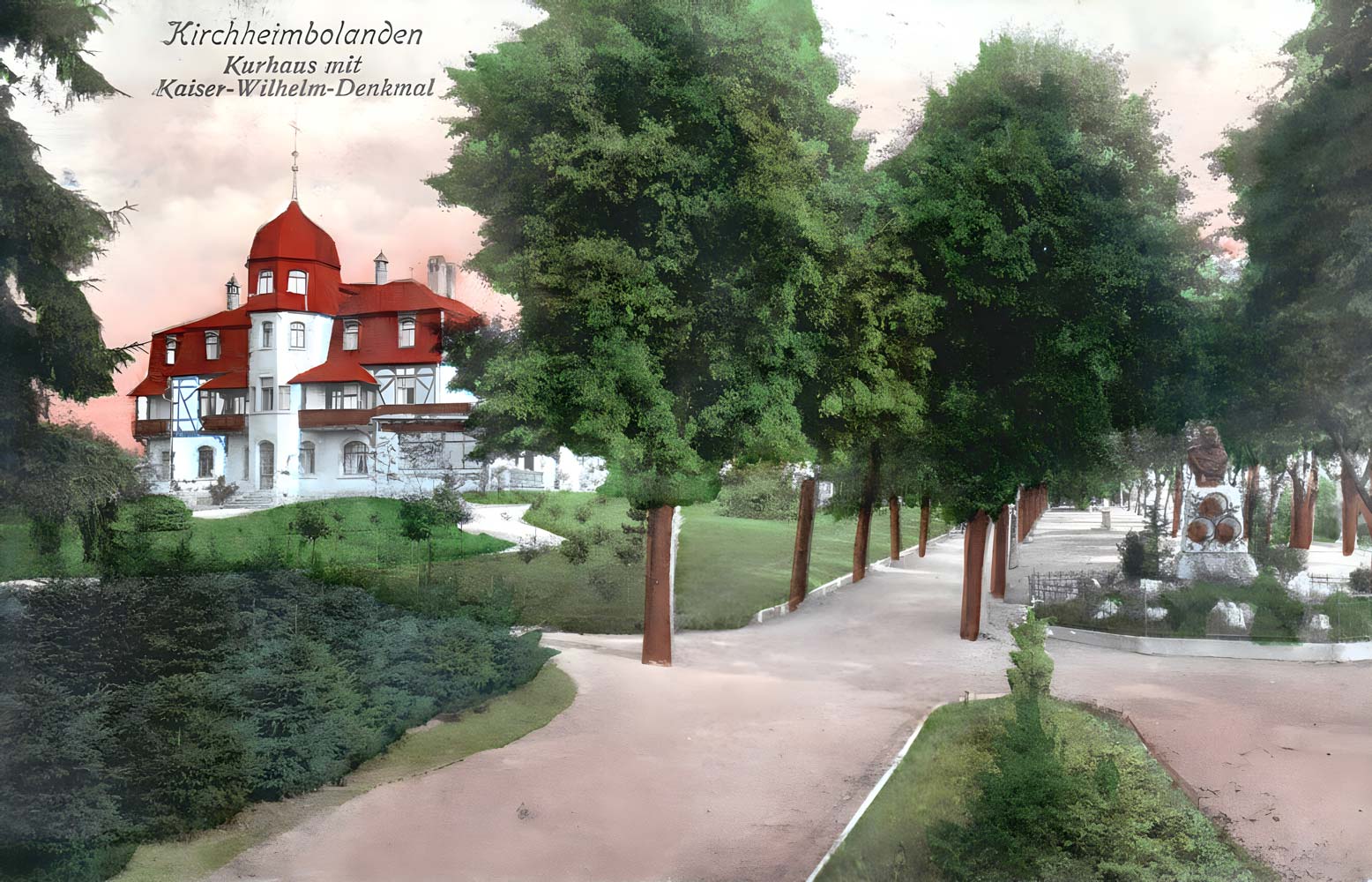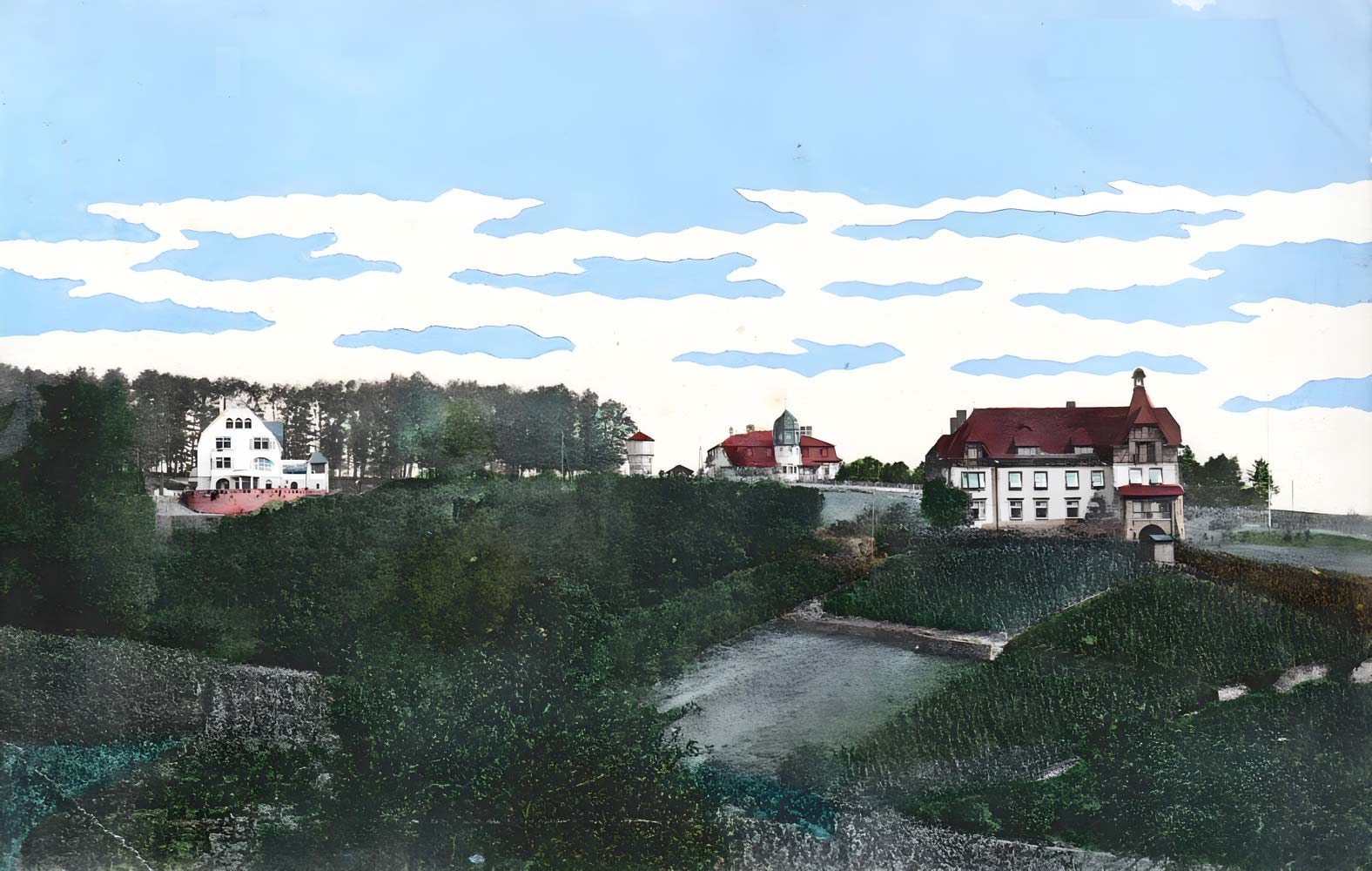Dr.-Carl-Glaser-Straße / Schillerhain
Carl Glaser
Privy Councillor Dr. Carl Glaser, born in Kirchheimbolanden in 1841, attended the local Latin school, the Kaiserslautern district trade school and the polytechnic school in Nuremberg. He then studied chemistry in Erlangen and Tübingen before joining BASF Ludwigshafen. A member of the supervisory board since 1895, he was its chairman from 1911-19. He played a major role in the factory production of dyes.
Dr. phil. and Dr. ing. h.c. Carl Glaser was one of the pioneers of chemistry, the third major leading industry of the “imperial era” alongside mechanical and electrical engineering. Carl Glaser was one of the pioneers.
Urban planning preference change
Were the outer suburbs (from Edenborner Straße out of town) in the imperial era
And the Bahnhofstrasse [Standort 45] preferred locations for prestigious residential development, so the war years 1914-18 brought a standstill.
After that, preferences changed. The main roads were no longer in demand, but rather quieter locations on the outskirts of the city.
One example is Dr.-Carl Glaser-Straße. It was created by extending a former country lane, which could also be used to reach the Bürgerpark on the Schillerhain.
This made the new residential area even more attractive in terms of urban development. The south side was built up with cubic hipped-roof and crippled hipped-roof villas, later also in simpler detached single-family houses, while the north side was dominated by a factory owner’s villa built in 1919-23 in neoclassical style (Glaserstraße 4.). Its owner was the Kirchheimboland tannery owner Theodor Seyler. His lavishly furnished villa combined upscale living style with befitting representation.
However, the building boom in Glaserstraße came to a standstill after just a few years during the global economic crisis (1929). The development of the upper Glaserstraße can therefore be attributed to more recent times.


Imperial citizens’ park
In the early 19th century, today’s Schiller Grove was a barren hill in the west of the city. But then, on the occasion of Friedrich Schiller’s 100th birthday in 1859, the idea arose to erect a Schiller monument here.
However, this was not realized until 1896 – now also in the spirit of imperial self-representation. The Schiller monument was therefore supplemented by a memorial to Kaiser Wilhelm I.
Both monuments were busts that could be obtained as “mass-produced goods” from the Galvanoplastische Kunstanstalt in Geislingen, which belonged to the Württembergische Metallwarenfabrik (WMF): Schiller, 105 cm high and Kaiser Wilhelm I, 110 cm high. A picture postcard from the imperial era “passes on” both monuments.
Like Koblenz in 1897 – albeit “oversized” at the “Deutsches Eck” – Kirchheimbolanden also had “its” Kaiser Wilhelm memorial. Just think: the same Wilhelm who had commanded the Prussian troops against the irregulars at the battle in Kirchheimbolanden on June 14, 1849 [Standort 48], now received his memorial on the “Schillerhain”. Of course, a far more powerful monument to the irregulars had already been erected in the town’s cemetery in 1872 with the “Mourning Germania” [Standort 49].
But here at the Schillerhain, the focus was on a completely different kind of meaning.
It is therefore not surprising that both Schillerhain monuments were destroyed during the occupation after the First World War.
A renewal was only considered after the Second World War – but now only with a new Schiller monument. The 3 m high figure, created by sculptor Richard Menges from Kaiserslautern, was inaugurated in 1951 – as a mission to regain the human. Accordingly, the commemorative speech emphasized that what we people today should learn from Schiller’s works is to be open to the world in the truest sense of the word. Instead, we have ended up in two world wars, which could have been avoided if people had carried his quotes less on their lips and more in their hearts.


“Kirchheimbolanden climatic health resort”
With the Bürgerpark on the Schillerhain, a surprisingly beautiful park [entstanden], which is rarely found in a small town, the idea of a “climatic health resort Kirchheimbolanden” quickly followed.
The city council therefore decided to “build a spa hotel on the heights of the Schiller Grove. It was built in the modern villa style and opened in 1904.”
The “Guide to the Palatinate climatic health resort of Kirchheimbolanden”, which was published the following year, therefore gave due prominence to the Kurhaus:
It is, of course, equipped with everything that belongs to a spa hotel, the food is plentiful and cheap and the tenant of the establishment […] does everything possible to make the spa guests’ stay as pleasant as possible. […] The elegant rooms with brand new furniture cost 1 to 2 ½ marks, depending on location and size, and meals cost 3 ½ marks per day, with coffee with butter and honey in the morning, a full dinner with coffee at lunchtime and a sumptuous supper in the evening.
The Schillerhain offers a spa-like environment for this:
The large Donnersberg forest begins directly behind the Kurhaus and stretches for hours, with good, dry paths, many benches, precise markings and excellent ozone-rich air. There is also a tennis court and plenty of guests from Kirchheim and Alzey come up here. The Kurhaus tenant is happy to answer all inquiries and is prepared to arrange for those who wish to do so to be collected by car from the station.
And there is also plenty more to see and do: the “music pavilion” regularly hosts music bands and concerts.
However, the First World War and the subsequent threat to democracy soon brought Kirchheimboland’s spa activities to a standstill.

“Villa Michel”
The spa facilities at Schillerhain were not limited to the Kurhaus alone. Almost at the same time, BASF Ludwigshafen had a convalescent home built for its employees. The imposing building, built in the mixed imperial style, now belongs to the Schillerhain curative education center under the auspices of the Palatinate State Church as the “Wichernhaus”.
The “Villa Michel”, the country residence of BASF board member Dr. Oskar Michel and his wife Luise, the daughter of Dr. Carl Glaser [Standort 15] and granddaughter of Kirchheimboland democracy advocate Dr. Friedrich Glaser [Standort 53], is also part of the curative education centre. The Schillerhain was thus a district in its own right in the late Wilhelmine imperial era. A photo from that time shows, from left to right: the “Villa Michel”, the Kurhaus and the BASF recreation home.
Oskar and Luise Michel remain associated in Kirchheimbolanden not only with the “Villa Michel”, but also with their estate in Dannenfelser Straße, today’s Rehabilitation Center am Donnersberg (Dannenfelser Straße 42), as well as a donation to the town of Kirchheimbolanden for the construction of 29 residential houses (Dr.-Oskar-Michel-Straße and Luise-Michel Straße) on what was then the southern edge of the town.
In 1950, the town of Kirchheimbolanden honored Luise Michel’s (1880-1969) diverse social commitment by making her an honorary citizen – also in memory of Oskar Michel (1868-1935), a member of the town council (1929-1933).
